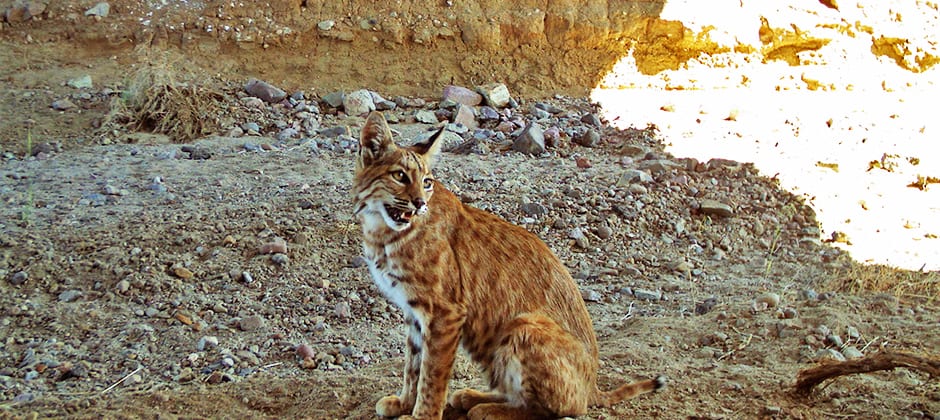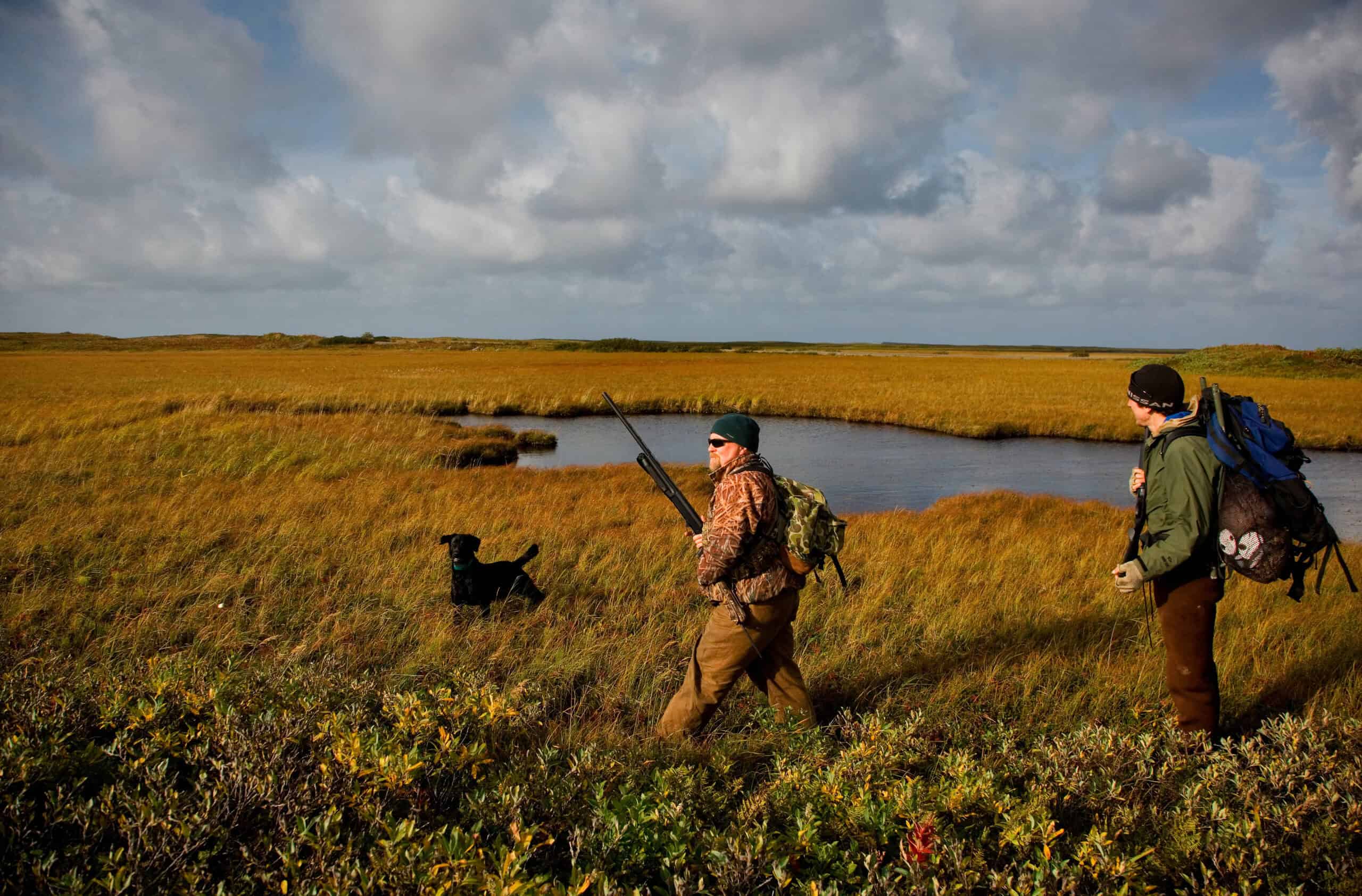Share this article
Wild Cam: Do predators ambush at underpasses?
Predators like coyotes and bobcats may actively use underpasses to ambush prey species seeking safe passage under highways.
Preliminary camera research on wildlife populations in the Hallelujah Junction Wildlife Area in California has found that many wildlife species are using three underpasses below a highway cutting through the state wildlife refuge.
“The animals have become very accustomed to using them when they come there,” said TWS member Molly Caldwell, a scientific aide with the California Department of Fish and Wildlife.
For our latest in the Wild Cam series, we take a look at some of the CDFW camera trap photos and the preliminary research results displayed recently on a poster by Caldwell and TWS member Mario Klip, an environmental scientist with CDWD, at the 2019 Joint Annual Conference of the American Fisheries Society and The Wildlife Society in October.
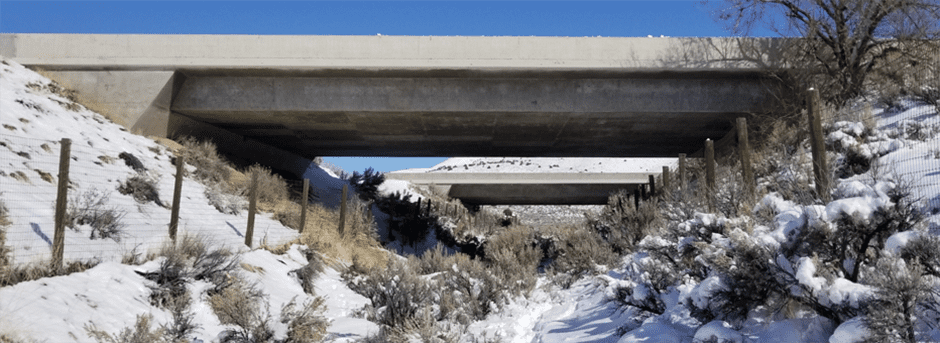
Underpasses were installed in Hallelujah Junction in the 1970s, but limited follow-up research was conducted to see whether wildlife used the structures until this recent study.
“We wanted to see how effective these underpasses had been at getting deer, and wildlife in general, from one side to the other,” said Klip. Fencing was installed along the highway to guide animals to the underpasses and to prevent animals from crossing the road, Klip said, but since some sections were only 4 feet tall, they may not be tall enough to keep agile wildlife from getting over them.
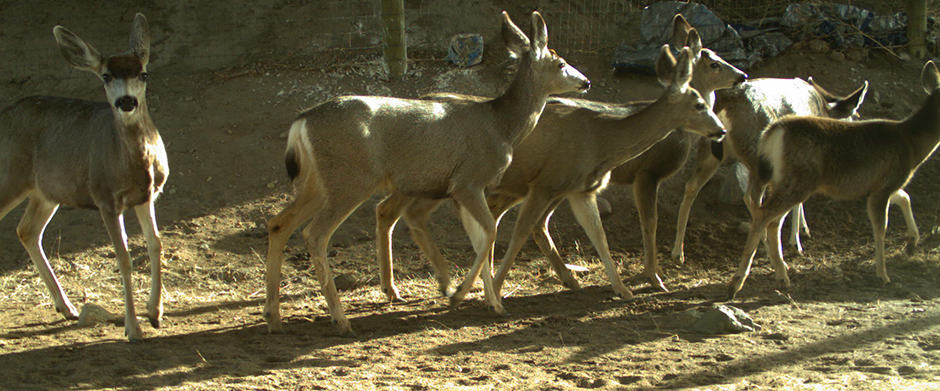
The researchers also have been studying seasonal migrations of the Loyalton-Truckee mule deer (Odocoileus hemionush) herd in the area, Caldwell said, and found that 1,000 to 2,000 animals use the underpasses during the spring, while only about 400 individuals use them in the fall.
The researchers aren’t sure where the others are crossing during the fall, but further research using GPS tracking collars may reveal what they already suspect — that many deer may be jumping the four-foot fences.
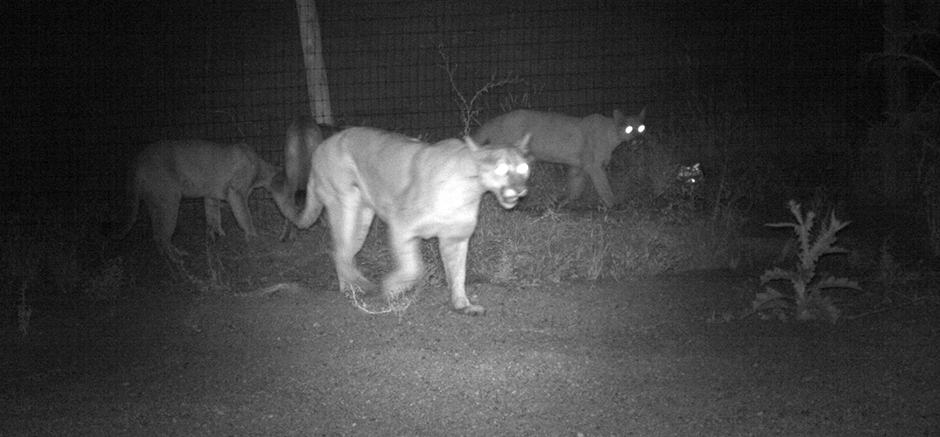
Mountain lions (Puma concolor) also use the wildlife passages. While researchers don’t have evidence that they use the underpasses to hunt, Caldwell said, they found that mountain lions use the underpasses more often in the seasons when deer are crossing.
Klip hopes that as they gather more data, they will learn more about how the presence of some animals in the underpass may affect their use by others. It’s possible the fresh scent of cougars alone may be enough to ward off some of their prey, he said, especially when it’s as many as this photo captured.
“Four mountain lions using an underpass — that must give deer pause,” he said.
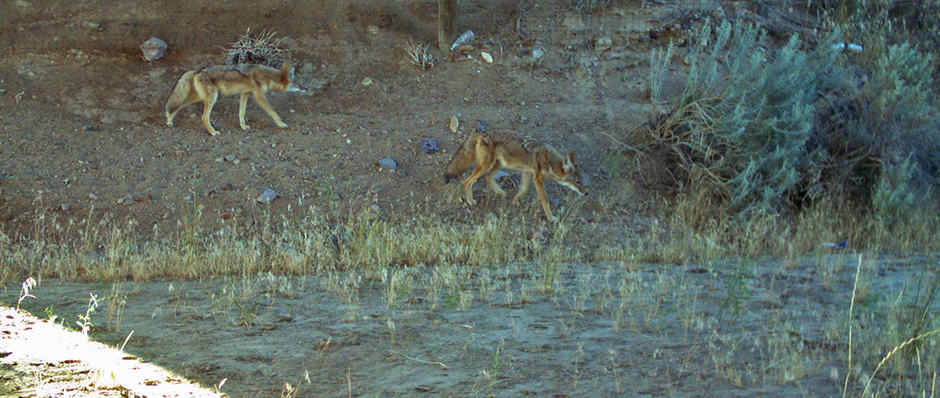
Coyotes (Canis latrans) particularly appear to be using the underpasses to hunt. Caldwell said the predators appear in underpasses more often used by rodents, lagomorphs, squirrels and other small prey.
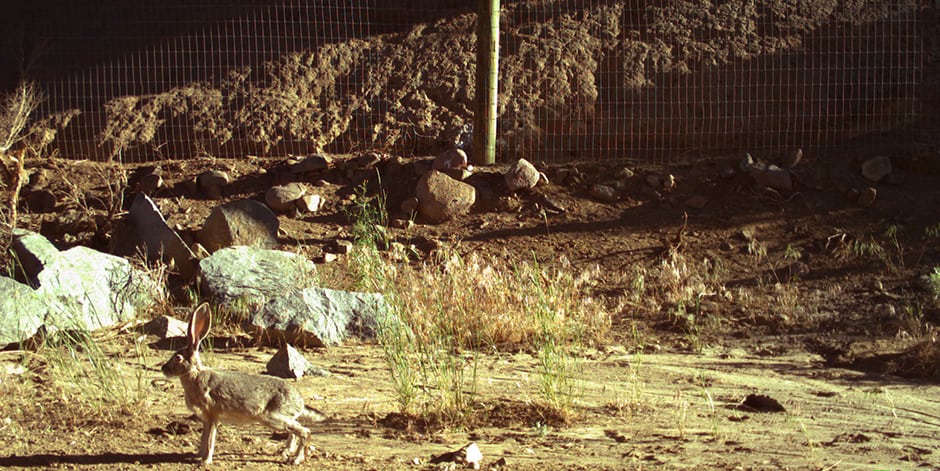
While it’s just a hypothesis, Caldwell said coyotes may even be using these bottlenecks to ambush their prey.
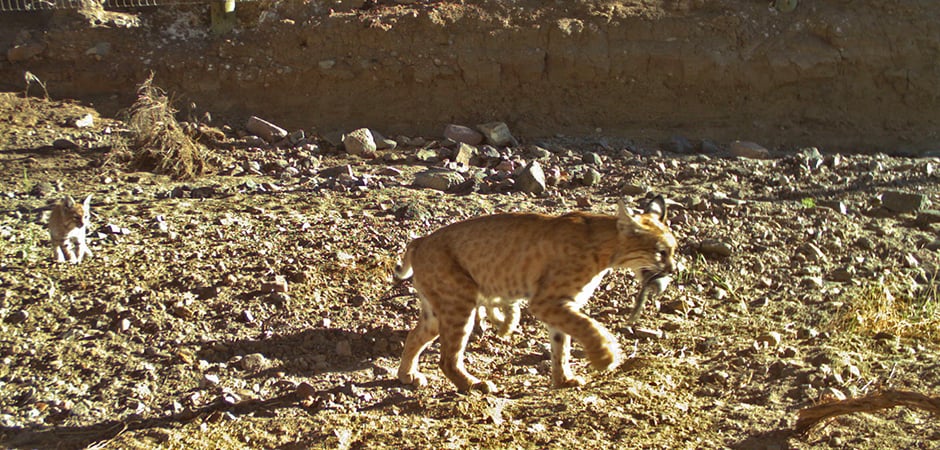
Bobcats (Lynx rufus) were also found with their mouths full on camera, such as in this shot. Other images show bobcats carrying hares and possibly other prey. Lagomorphs and other small prey may use the bushes as shelter, Caldwell said, though it doesn’t appear always to work out in their favor.
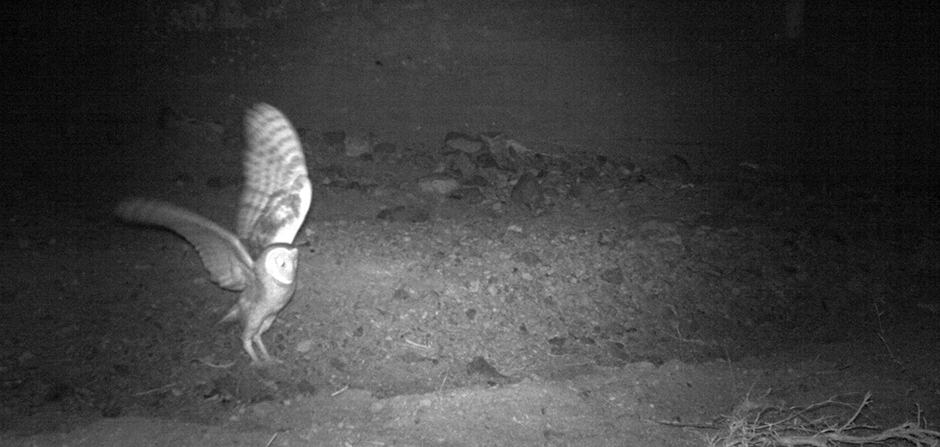
Aside from land-based predators, a barn owl (Tyto alba) apparently nested above one of the camera traps and is possibly hunting in this shot, although researchers say they don’t have enough data to show a trend of owls using the underpasses.
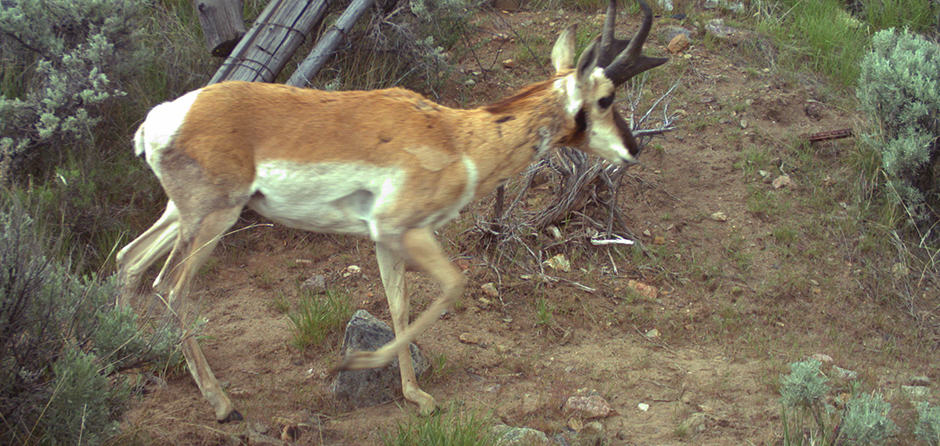
Quail (Callipepla californica) are also making seasonal dispersals through the underpasses, which was a unique discovery because previous studies have very little data on birds using crossings like these. Pronghorn (Antilocapra americana), like the one pictured above, were rarely seen in the underpasses, even though they are present in the area.
While the researchers are still gathering data, they hope this study provides baseline knowledge since taller fences are now in the works. Once these fences are built, the camera traps and other research can help reveal whether they helped funnel more wildlife toward the underpasses.
The data is important, Caldwell said, because it will help inform lawmakers about whether the money invested is resulting in fewer road accidents, which can be fatal for both wildlife and humans.
This photo essay is part of an occasional series from The Wildlife Society featuring photos and video images of wildlife taken with camera traps and other equipment. Check out other entries in the series here. If you’re working on an interesting camera trap research project or one that has a series of good photos you’d like to share, email Joshua at jlearn@wildlife.org.
Header Image:
Bobcats and other predators may be using highway underpasses to hunt prey.
©California Department of Fish and Wildlife



